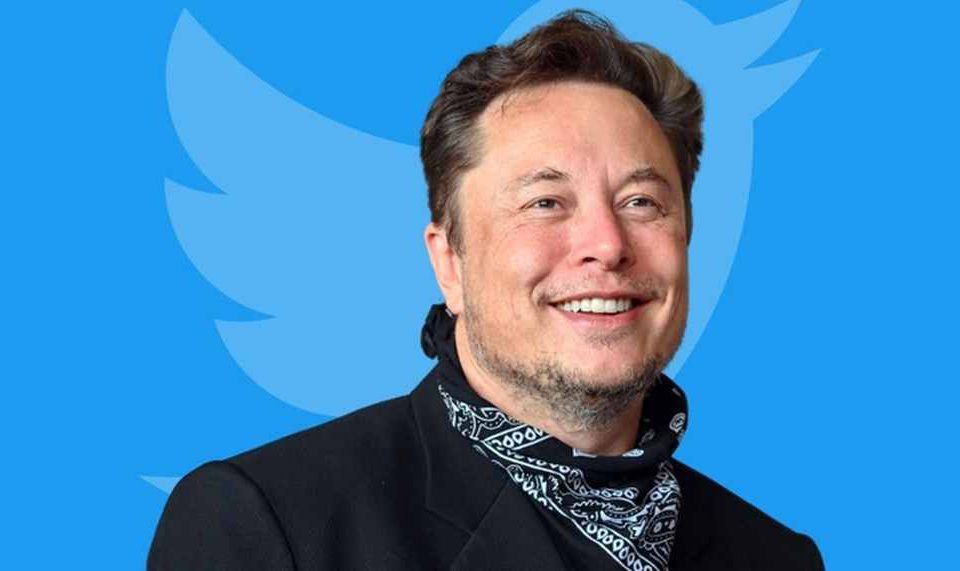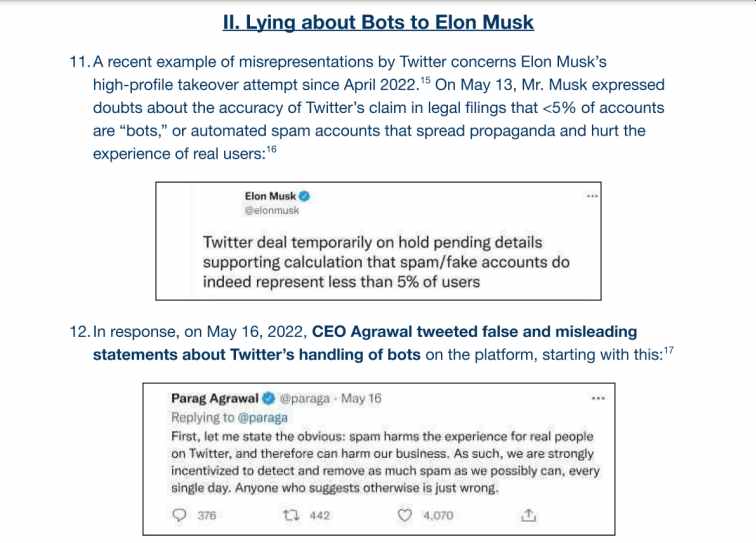Whistleblower says Twitter lied to Elon Musk about spam bots, a boost to Musk’s legal battle

Yesterday, we covered a story from The Washington Post about the former Twitter head of security Peiter “Mudge” Zatko’s claim that the social giant misled regulators about spam accounts and buried ‘egregious deficiencies.’
In a complaint with the Securities and Exchange Commission (SEC), Zatko alleged that he “witnessed senior executive engaging in deceitful and/or misleading communications affecting Board members, users and shareholders” on multiple occasions in 2021, during which CEO Parag Agrawal asked Zatko to provide false and misleading documents.
Today, we now have new updates based on the Whistleblower disclosure filed in July with federal regulators (pdf) th regulators in July. In the filing, Zatko said that Twitter misled Tesla CEO Elon Musk about the number of bots on the platform.
His disclosure also includes the allegation that the true number of spam accounts and bots on Twitter is probably “meaningfully higher” than the 5 percent of daily monetizable users that the social media firm claims.
“26.A more meaningful and honest answer to Mr. Musk’s question would be trivial for Twitter to calculate, given that Twitter is already doing a decent job excluding spam bots and other worthless accounts from its calculation of mDAU. But this number is likely to be meaningfully higher than 5%.“
Zatko didn’t stop there. He also made a series of explosive allegations regarding Twitter’s cybersecurity policies including the claim that Twitter was “lying about bots to Elon Musk.”

Zatko accuses Twitter of fudging numbers and further alleges that Twitter uses an “opaque metric” called monetizable daily active users (mDAU), rather than an earlier metric of total monthly users that was subject to big swings, including when spam and bot accounts were removed.
“Until 2019, Twitter reported total monthly users, but stopped because the number was subject to negative swings for a variety of reasons, including situations such as the removal of large numbers of inappropriate accounts and botnets. Instead, Twitter announced a new, proprietary, opaque metric they called “mDAU” or “Monetizable Daily Active Users,” defined as valid user accounts that might click through ads and actually buy a product. From Twitter’s perspective “mDAU” was an improvement because it could internally define the mDAU formula, and thereby report numbers that would reassure shareholders and advertisers. Executives’ bonuses (which can exceed $10 million) are tied to growing mDAU,” the disclosure states.
Zatko also added that executive bonuses—which could be in excess of $10 million—are tied to mDAU growth. He alleges that Twitter executives are “incentivized to avoid counting spam bots as mDAU” in order for the platform to be more appealing to advertisers.
Zatko also claims in the disclosure that there are “many millions” of active accounts that aren’t part of the mDAU calculations because they’re spam bots or Twitter doesn’t think they can monetize them, but their presence on the platform still affects user experience.
Zatko also asked the company’s Head of Site Integrity—who’s responsible for addressing platform manipulation, including bots—what the underlying spam bot count was, according to the disclosure.
“We don’t really know,” was the response, according to the disclosure, which said that “the company could not even provide an accurate upper bound on the total number of spam bots on the platform.”
Now dozens of banks, funds, and other stakeholders have been subpoenaed to testify at a non-jury trial scheduled for October. Zatko could end up its star witness.
In his response to the bombshell disclosure, Musk tweeted: “So spam prevalence *was* shared with the board, but the board chose not disclose that to the public …”
So spam prevalence *was* shared with the board, but the board chose not disclose that to the public … pic.twitter.com/lXk48TFZL1
— Elon Musk (@elonmusk) August 23, 2022
Meanwhile, Twitter insists that spam bots on its platform represent less than 5% of users. Musk, on the other hand, thinks the figure is much higher. In a May 17 tweet, Musk said that “20% fake/spam accounts, while 4 times what Twitter claims, could be much higher. My offer was based on Twitter’s SEC filings being accurate.”
20% fake/spam accounts, while 4 times what Twitter claims, could be *much* higher.
My offer was based on Twitter’s SEC filings being accurate.
Yesterday, Twitter’s CEO publicly refused to show proof of <5%.
This deal cannot move forward until he does.
— Elon Musk (@elonmusk) May 17, 2022
Another analysis conducted by Israeli cybersecurity company CHEQ back in May found that 12% of all traffic originating from Twitter is made up of bots. “Up to 12% of all traffic originating from Twitter is made up of bots.” CHEQ found that 11.71% of all website visits originating from Twitter were by bots or fake users.
On April 25, Twitter agreed to sell the company to Elon Musk for $44 billion. Under the terms of the agreement, Twitter stockholders will receive $54.20 in cash for each share of Twitter common stock that they own upon closing the proposed transaction.
The purchase price represents a 38% premium to Twitter’s closing stock price on April 1, 2022, which was the last trading day before Mr. Musk disclosed his approximately 9% stake in Twitter. Musk needed to use his Tesla stock to raise $21 billion in equity to fund his takeover of the social media giant.
Under the terms of the agreement, Twitter stockholders will receive $54.20 in cash for each share of Twitter common stock that they own upon closing the proposed transaction. The purchase price represents a 38% premium to Twitter’s closing stock price on April 1, 2022, which was the last trading day before Mr. Musk disclosed his approximately 9% stake in Twitter.

